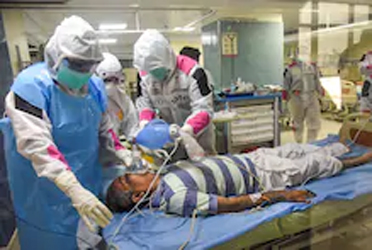NE NEWS SERVICE
NEW DELHI, JUNE 9
High-level central teams have been deployed in 15 states and UTs with more than 50 districts or municipal bodies that are witnessing a spurt in cases to assist the local administrations in containment and management of the COVID-19 outbreak, the Union health ministry said on Tuesday.
These multi-disciplinary teams are helping the states and UTs address challenges like testing bottlenecks, low tests per million population, high confirmation rates, risk of capacity shortfall over the next two months, potential bed shortage, growing case fatality rate, high doubling rate and sudden spike in active cases, etc, it said.
These states and UTs are Maharashtra (seven districts/municipalities), Telangana (four), Tamil Nadu (seven), Rajasthan (five), Assam (six), Haryana (four), Gujarat (three), Karnataka (four), Uttarakhand (three), Madhya Pradesh (five), West Bengal (three), Delhi (three), Bihar (four), Uttar Pradesh (four), and Odisha (five).
“The aim is to assist the state governments by providing technical support for containment and (to) facilitate the management of COVID-19 outbreak,” the ministry said in a statement.
With 9,987 fresh infections, India saw a record daily rise in COVID-19 cases for the seventh consecutive day on Tuesday. The country’s tally stands at 2,66,598. The death toll due to the disease mounted to 7,466 as 266 more people died.
The three-member central teams comprise of two public health experts/epidemiologist/clinicians and a senior joint secretary-level nodal officer for administrative handholding and improving governance, the ministry said.
These teams are working in the field and visiting healthcare facilities to support the state health department in the implementation of containment measures and efficient treatment and clinical management of cases within the districts and cities, it said.
The ministry said, “In order to ensure better coordination, quick action on the ground, adoption of a more granular strategy, it is proposed that these districts and municipalities should regularly remain in touch with central teams which are already coordinating with the states.”
Such frequent interaction would further strengthen the surveillance, containment, testing, and treatment-related action on the ground.
Many districts and municipalities have already formalised a dedicated core team at the district level comprising of medical and administrative officials to coordinate on a regular basis with the central team.












